Digging Up Britain’s Past – Debunked
Promotional Video – Digging Up Britain’s Past – Debunked
Transcript
3
0:00:00
Stonehenge, ancient object of wonder and mystery. It’s the world’s most famous prehistoric monument and one of Britain’s most instantly recognizable landmarks.
4
0:00:20
Although they appeared in this landscape thousands of years ago, these stones still have the power to bewitch and baffle us.
3
0:00:28
Maybe that’s because we don’t really know who put them there, how they did it, or why
6
0:00:33
they did it.
1
0:00:35
That’s not for want of trying. Archaeologists have been searching for answers to these questions for hundreds of years. Back in the 17th century, some people were convinced the monument was a Roman temple. Fast forward 400 years and our understanding of Stonehenge has changed dramatically. We now know that it was in place long before the Roman Empire ever existed, and that it dates back to the Neolithic period, the so-called New Stone Age.
All right, let’s pause the video at this juncture. I am Robert John Langdon, stepping in to offer some clarity as you engage in this content. It is important to recognize that many television programs featuring highly polished presenters often convey information as if it was factual and verified. However, the reality is that much is merely theoretical or hypothetical and not always accurate. Over a period of time, the persistent questioning has revealed a lack of definitive answers. My aim here is to navigate you through these inquiries as they arise throughout the program. Now to address the point made by Alex regarding Stonehenge being Neolithic. This is not entirely accurate. In fact Stonehenge is much older, belonging to the Mesolithic period. This assertion is backed by the discovery of four, actually five holes in the area that was once used as a car park. These holes, after being subjected to carbon dating, a process that took 12 years to initiate, revealed to be significantly older than first thought. They date back to the Mesolithic era and not the Neolithic period of 3000 BC as commonly cited, but at a time roughly 5000 years earlier. So let’s delve further into this narrative.
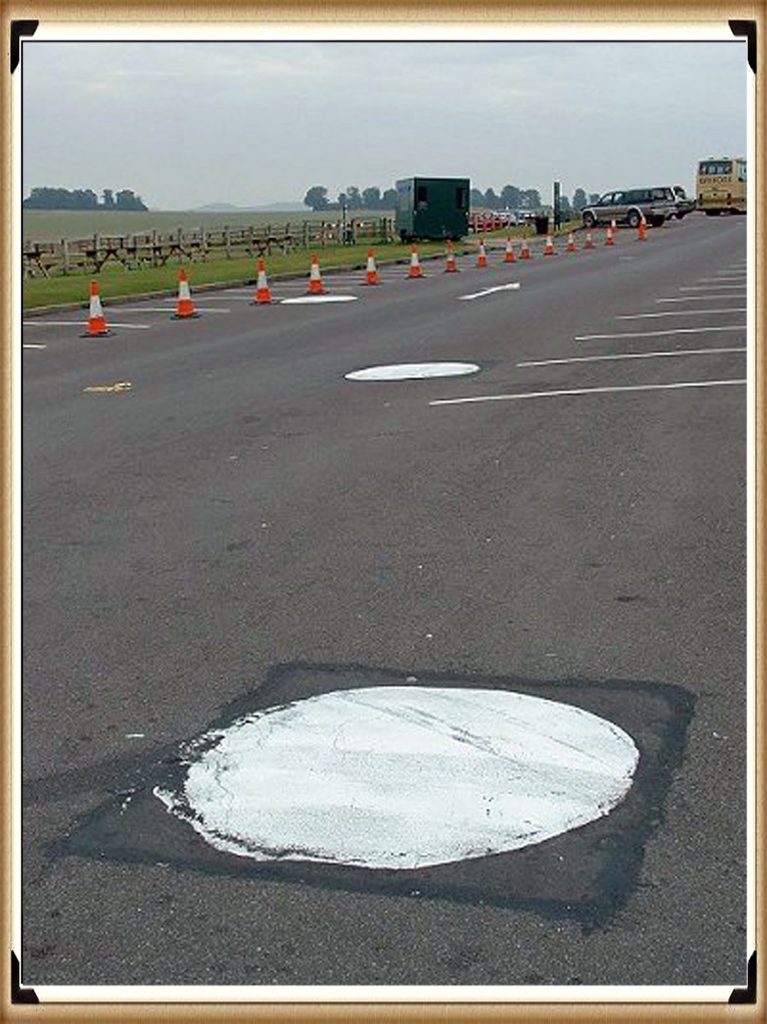
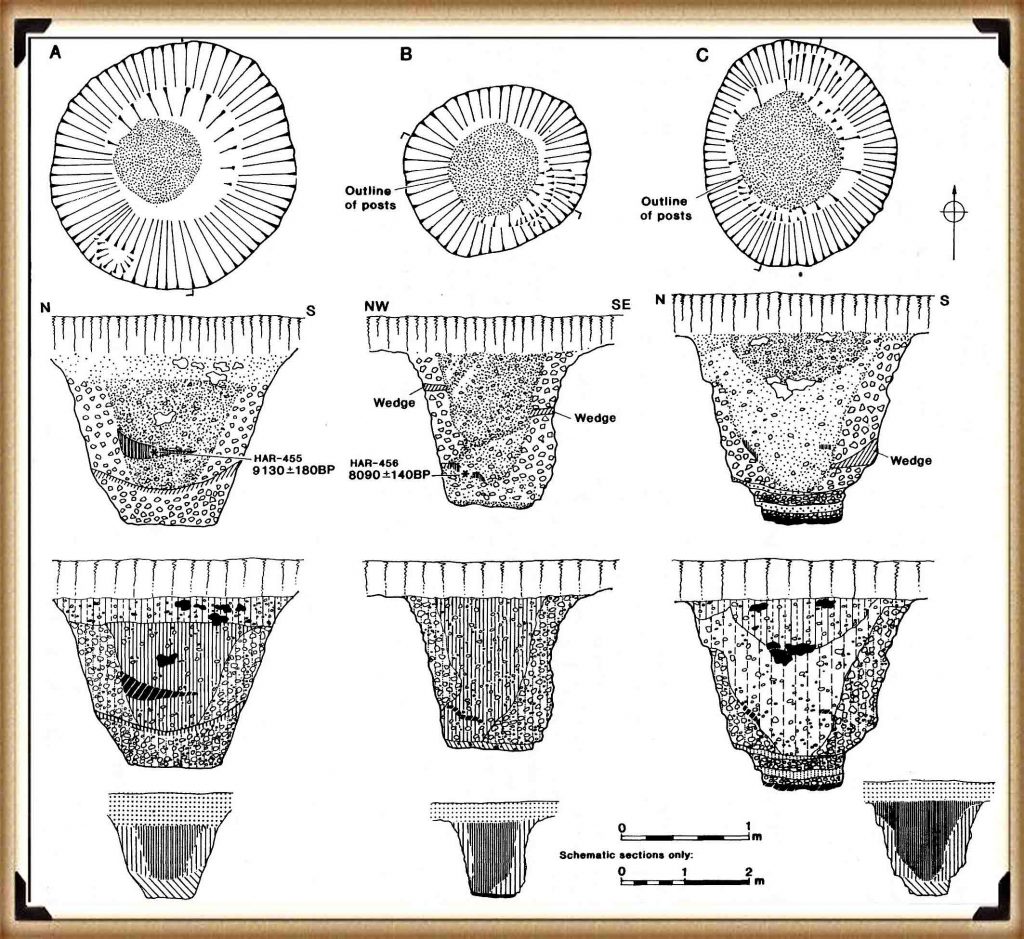
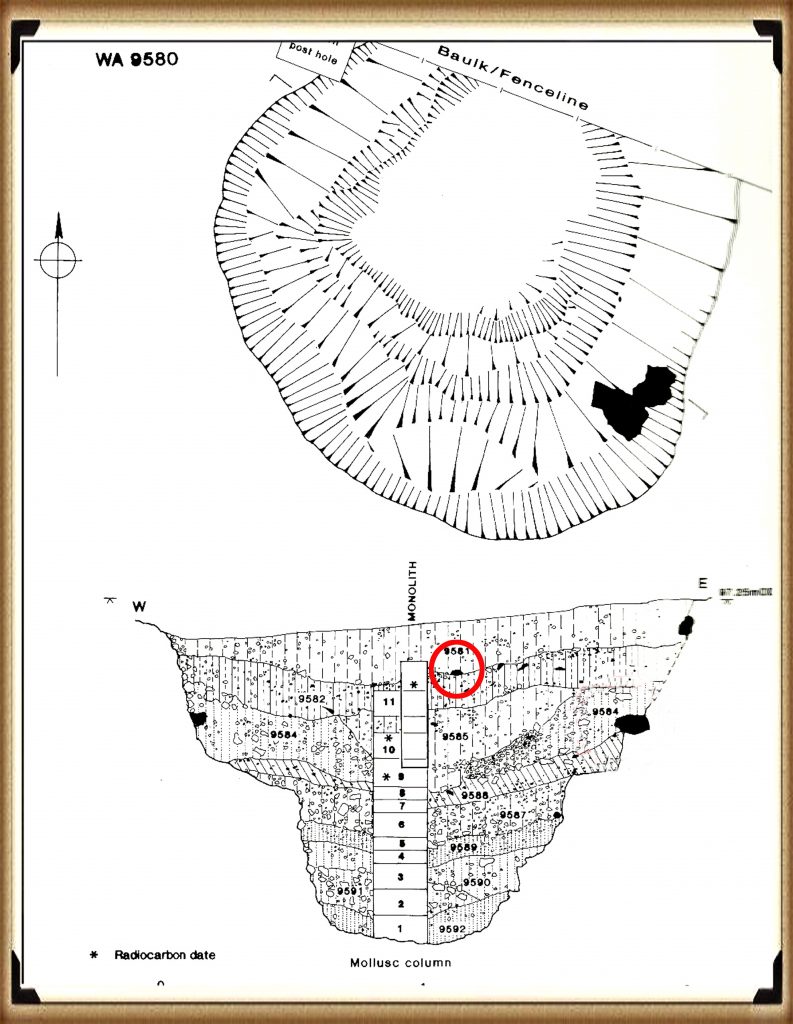
3
0:02:41
Yeah that’s good and well but why is it here? What is it meant to symbolise? These questions have continued to stump the world’s leading experts. But there’s another mystery the team at this dig are trying to crack. What was here before the stones arrived? And was it considered a sacred site even then?
5
0:03:00
You’re breaking new ground because we’ve never seen these types of features in this landscape. You have got yourself a huge challenge.
13
0:03:06
We’ll be with them every step of the way
3
0:03:09
as they unearth the concealed clues and the ancient evidence.
6
0:03:15
The dig is taking place in the shadow of this. The henge itself is actually the circular ditch
4
0:03:21
and bank surrounding the stones.
6
0:03:23
These earthwork enclosures would have been common features
1
0:03:26
in the Neolithic landscape, but the architectural grandeur of the Stonehenge monument is unique. Sadly that’s another incorrect assumption. Yes the Stonehenge structure is unique and we’ll come on to that a little bit later but the bit they skimped over as most archaeologists skimp over is the moat. The moat is actually the most important aspect of the site and it’s the only thing that gives you a clue to its function. The reason that no one knows how, why Stonehenge was built for what it was built for is because
1
0:04:16
everybody’s overlooked the moat and I don’t understand why. Just a small investigation into the moat shows you it is actually not a moat. It is actually a series of small pits. Now, are we suggesting that the great architects of Stonehenge can’t dig a ditch successfully? Or did they dig the moated area in a particular way for a good reason? Not only is the ditch pit a major mystery, but also what they’d done with the soil. Stonehenge doesn’t have a bank and to be honest if it doesn’t have a bank and it doesn’t have a ditch it shouldn’t be called Stonehenge. It just shows you to what degree the archaeologists are confused. It’s not a proper hinge. The sole has been stretched on both sides very evenly. The ditch is not a ditch, it’s a series of pits, and inside the pits there’s a series of seats where you can sit on.
1
0:05:52
Now, that is a revelation in itself. Completely overlooked by archaeologists and obviously these TV documentaries.
4
0:06:05
These small stones standing within the circle are a different type of rock. They’re called blue stones. It’s humbling to think that some genius architect conceived of all of this 4,500 years ago and that it’s still here for us to marvel at today. But not everyone has time to marvel. The archaeologists on site are getting down to business. Henry
3
0:06:24
Chapman is one of the 35 strong team. On a warm but windy Salisbury Plain, Henry, what do you think it is that brings so many people year after year? I mean, we can see them queuing around the stones. What brings people here? Oh, it’s so much mystery, and that’s what brings people here. So as an archaeologist, how special is it to dig here? It’s such an exciting landscape to work in and there’s so much interest. It’s just iconic, so it ticks all the boxes. There have been digs here for hundreds of years. Shouldn’t you have found everything by now? Well, you’d think so. It’s the most intensively
2
0:07:08
studied landscape in the world for archaeologists, but they’ve only ever looked at the bits which are really obvious. Stonehenge isn’t just about the stones, it’s about the whole landscape. When you look at the earliest activity at Stonehenge and start relating that to what was already in this landscape, that’s when we start making sense of it.
1
0:07:23
Henry Chapman’s absolutely right. Stonehenge can only be seen for what it is through the landscape. Now this program is of an excellent production but at no point has it shown you any LiDAR maps. Now LiDAR is the greatest landscaping tool archaeologists have and never use. Why they don’t not use it and why is it never shown in any detail on these TV programs I will never know. It shows you and the filming gives you some point of reference on the landscape to show you that Stonehenge isn’t at the top of a hill. Now if it was some sort of astronomical observation point which a lot of people believe, you would put it on top of a hill and by a dry river valley. There’s a reason for that, but again, the program doesn’t look at the landscape in proper detail and therefore that’s another key point of why Stonehenge is placed where it is placed is overlooked.
3
0:08:48
So whatever fell into the ground here has probably got a good story to tell Henry set himself the mammoth task of uncovering the story of this entire landscape With a few shovels and trowels, but then this is the 21st century. So there’s a bit of high-tech weaponry involved, too The team have done a geophysical survey of the entire area. The images from the sensors provide them with a picture of what may lie beneath the surface. You can see that even TV documentaries about Stonehenge find it quite farcical that archaeologists
1
0:09:26
use the most absurd heaps of robs and devices for surveying an area, particularly as you see here when you have LIDAR maps which are much much more effective than the piece of paper that Henry will be showing the presenter and trying to explain the landscape from. Also with LIDAR maps we have the facility to flood areas and this flooding is essential to actually understand the landscape as it studied is essential to understand the landscape as it was in the soil.
2
0:10:28
Anything which is very dark is more magnetic in this case.
3
0:10:32
So what does it mean if it’s more magnetic?
2
0:10:34
It normally means there’s some sort of human activity. This particular area is unusual insofar as there’s some very strange archaeological shapes, if you like, in the detail. There are thousands of these little dots everywhere, these blobs across the whole of the Stonehenge landscape. We don’t really know what they are. And nobody’s really looked at them.
3
0:10:51
So this pit that you’re digging is one of these dark blobs.
10
0:10:54
Yeah.
3
0:10:55
So this could be an area that people have thrown things into the ground, buried them or dropped them or whatever.
2
0:11:00
Yeah, yeah. And the chances are, I mean, if there’s a big pit, it’s gonna be quite deliberate because it’s just so hard to cut into the chalk.
3
0:11:06
So do you want me to keep asking you loads of questions, Henry, so you don’t have to get back to the pit
12
0:11:10
and start digging?
11
0:11:11
Yeah.
8
0:11:11
So you can pull rags.
1
0:11:13
I need to see straight through me!
3
0:11:16
As this project gets underway, the results of earlier digs continue to be analysed.
1
0:11:22
Okay, these pits are fascinating. As you saw there with Henry’s, there’s loads of them on the Stonehenge landscape. We haven’t got a clue what they are. Now, if you actually look at this photograph, you can see that it’s not just a pit as in a hole where someone’s going to bury their rubbish. These are three to four metres wide. There has been some obscure ideas that these are boulder markers. I don’t understand some of the archaeologists’ rational thinking about holes in the ground, but they don’t seem to know why people put holes in the ground so they come up with this idea that it’s ceremonial. These people are a very practical civilization if they’re going to spend time digging a hole, and we shall see later on someone trying to dig a hole with an atlantic. There’s a good really good reason. My studies have shown that most of these are dug because of minerals. There are some 20 odd minerals prehistoric people have used and
1
0:12:33
traded for in the past. We’ve got evidence for that. These pits are normally associated with quarrying and I’ve done several books about sites including just down the road Monsdyke, which is surrounded by 200 of these pits, which unfortunately archaeologists have yet to pick up on.
3
0:12:58
Hello! Sorry to interrupt. It’s a hive of activity quite literally, isn’t it?
2
0:13:05
It is, it is.
3
0:13:06
I can see a circle. I mean, that hasn’t been created by you guys, has it?
2
0:13:10
No, no. So we’ve seen it with the geophysics, as this circular feature. What we expect this to be is quite a deep pit, and that would have filled in gradually. So what they’re doing right now is just digging the most recent deposit.
3
0:13:23
It’s quite brutal work, isn’t it?
10
0:13:24
I mean, you’re not in there with two brushes.
2
0:13:26
No, no, absolutely. I mean, it’s heavy work. But as we dig down, we’re going back in time, effectively. So as we get to the most exciting bit is the bottom. Potentially, this might be earlier than Stonehenge, might be the same dates. We don’t know yet until we get to the bottom and find out what’s in there.
2
0:13:40
The more we can add piece of evidence about the early landscape, the more we have the chance of actually understanding Stonehenge as it is.
3
0:13:47
Wow. Are you excited every day you come here and think, what are we gonna find today?
9
0:13:51
Yeah.
3
0:13:51
Even after all these years?
2
0:13:53
Yeah, it’s always new, isn’t it? That’s the great thing with archeology is it’s always something new.
3
0:13:59
Well, I don’t wanna be bossy, Henry, but get digging.
8
0:14:01
I wonder what’s in there?
6
0:14:03
While many of this site’s secrets are buried beneath us,
4
0:14:06
the stones that stand above ground also have a story to tell. Although the giant arch-like sarsen stones are the most famous and recognisable,
7
0:14:15
it was actually the smaller ones,
4
0:14:17
the so-called blue stones, that arrived on Salisbury Plain first. They made their first appearance around 3000 BC, and they’d had a fair old journey to get there. Experts have identified where the Blue Stones originated, 140 miles away.
6
0:14:40
Hello, Delyn.
4
0:14:41
Hello. Nice to meet you.
1
0:14:42
Nice to meet you. The source is in the beautiful, but sometimes wet and windy, Priscilly Hills of West Wales. Priscilly Hills of West Wales. I can imagine it is a stunning landscape when you can see it.
Digging Up Britain’s Past – Debunked
Further Reading
For information about British Prehistory, visit www.prehistoric-britain.co.uk for the most extensive archaeology blogs and investigations collection, including modern LiDAR reports. This site also includes extracts and articles from the Robert John Langdon Trilogy about Britain in the Prehistoric period, including titles such as The Stonehenge Enigma, Dawn of the Lost Civilisation and the ultimate proof of Post Glacial Flooding and the landscape we see today. (Digging Up Britain’s Past – Debunked)
Robert John Langdon has also created a YouTube web channel with over 100 investigations and video documentaries to support his classic trilogy (Prehistoric Britain). He has also released a collection of strange coincidences that he calls ‘13 Things that Don’t Make Sense in History’ and his recent discovery of a lost Stone Avenue at Avebury in Wiltshire called ‘Silbury Avenue – the Lost Stone Avenue’. (Digging Up Britain’s Past – Debunked)
Langdon has also produced a series of ‘shorts’, which are extracts from his main body of books:
Further Reading
For active discussions on the findings of the TRILOGY and recent LiDAR investigations that are published on our WEBSITE, you can join our and leave a message or join the debate on our Facebook Group.
For in-depth information about British Prehistory, we invite you to explore www.prehistoric-britain.co.uk, an extensive resource featuring archaeology blogs and investigations. This collection includes modern LiDAR reports that shed light on ancient landscapes. Additionally, you will find extracts and articles from the Robert John Langdon Trilogy, offering fascinating insights into Britain during the Prehistoric period. Some notable titles from the trilogy include “The Stonehenge Enigma,” “Dawn of the Lost Civilisation,” and groundbreaking evidence of Post Glacial Flooding and its impact on the landscape we see today.(Digging Up Britain’s Past – Debunked)
Robert John Langdon has further enriched the exploration of Prehistoric Britain through his YouTube web channel, boasting over 100 investigations and video documentaries that complement his classic trilogy. In addition to his extensive work, Langdon has unveiled a compilation of intriguing coincidences titled “13 Things that Don’t Make Sense in History.” He has also brought to light his recent discovery of a forgotten Stone Avenue in Avebury, Wiltshire, aptly named ‘Silbury Avenue – the Lost Stone Avenue.’ (Digging Up Britain’s Past – Debunked)
For those who wish to actively engage in discussions about the findings from the TRILOGY and recent LiDAR investigations, we invite you to join our community. You can participate by leaving messages and joining debates on our dedicated Facebook Group. We encourage open dialogue and the exchange of ideas to foster a deeper understanding of Prehistoric Britain and its fascinating mysteries.(Digging Up Britain’s Past – Debunked)
As you embark on your journey through British Prehistory, we hope these resources provide valuable insights and inspire further exploration of this captivating field of study.
Digging Up Britain’s Past – Debunked
1
a
- AI now Supports – Homo Superior
- AI now supports my Post-Glacial Flooding Hypothesis
- Alexander the Great sailed into India – where no rivers exist today
- Ancient Prehistoric Canals – The Vallum
- Ancient Secrets of Althorp – debunked
- Antler Picks built Ancient Monuments – yet there is no real evidence
- Antonine Wall – Prehistoric Canals (Dykes)
- Archaeological ‘pulp fiction’ – has archaeology turned from science?
- Archaeological Pseudoscience
- Archaeology in the Post-Truth Era
- Archaeology: A Bad Science?
- Archaeology: A Harbour for Fantasists?
- Archaeology: Fact or Fiction?
- Archaeology: The Flaws of Peer Review
- Archaeology’s Bayesian Mistake: Stop Averaging the Past
- Are Raised Beaches Archaeological Pseudoscience?
- Atlantis Found: The Mathematical Proof That Plato’s Lost City Was Doggerland
- ATLANTIS: Discovery with Dan Snow Debunked
- Avebury Ditch – Avebury Phase 2
- Avebury Post-Glacial Flooding
- Avebury through time
- Avebury’s great mystery revealed
- Avebury’s Lost Stone Avenue – Flipbook
b
- Battlesbury Hill – Wiltshire
- Beyond Stone and Bone: Rethinking the Megalithic Architects of Northern Europe
- BGS Prehistoric River Map
- Blackhenge: Debunking the Media misinterpretation of the Stonehenge Builders
- Brain capacity (Cro-Magnon Man)
- Brain capacity (Cro-Magnon Man)
- Britain’s First Road – Stonehenge Avenue
- Britain’s Giant Prehistoric Waterways
- British Roman Ports miles away from the coast
c
- Caerfai Promontory Fort – Archaeological Nonsense
- Car Dyke – ABC News PodCast
- Car Dyke – North Section
- CASE STUDY – An Inconvenient TRUTH (Craig Rhos Y Felin)
- Case Study – River Avon
- Case Study – Woodhenge Reconstruction
- Chapter 2 – Craig Rhos-Y-Felin Debunked
- Chapter 2 – Stonehenge Phase I
- Chapter 2 – Variation of the Species
- Chapter 3 – Post Glacial Sea Levels
- Chapter 3 – Stonehenge Phase II
- Chapter 7 – Britain’s Post-Glacial Flooding
- Cissbury Ring through time
- Cro-Magnon Megalithic Builders: Measurement, Biology, and the DNA
- Cro-Magnons – An Explainer
d
- Darwin’s Children – Flipbook
- Darwin’s Children – The Cro-Magnons
- Dawn of the Lost Civilisation – Flipbook
- Dawn of the Lost Civilisation – Introduction
- Digging for Britain – Cerne Abbas 1 of 2
- Digging for Britain Debunked – Cerne Abbas 2
- Digging Up Britain’s Past – Debunked
- DLC Chapter 1 – The Ascent of Man
- Durrington Walls – Woodhenge through time
- Durrington Walls Revisited: Platforms, Fish Traps, and a Managed Mesolithic Landscape
- Dyke Construction – Hydrology 101
- Dykes Ditches and Earthworks
- DYKES of Britain
e
f
g
h
- Hadrian’s Wall – Military Way Hoax
- Hadrian’s Wall – the Stanegate Hoax
- Hadrian’s Wall LiDAR investigation
- Hambledon Hill – NOT an ‘Iron Age Fort’
- Hayling Island Lidar Maps
- Hidden Sources of Ancient Dykes: Tracing Underground Groundwater Fractals
- Historic River Avon
- Hollingsbury Camp Brighton
- Hollows, Sunken Lanes and Palaeochannels
- Homo Superior – Flipbook
- Homo Superior – History’s Giants
- How Lidar will change Archaeology
i
l
m
- Maiden Castle through time
- Mathematics Meets Archaeology: Discovering the Mesolithic Origins of Car Dyke
- Mesolithic River Avon
- Mesolithic Stonehenge
- Minerals found in Prehistoric and Roman Quarries
- Mining in the Prehistoric to Roman Period
- Mount Caburn through time
- Mysteries of the Oldest Boatyard Uncovered
- Mythological Dragons – a non-existent animal that is shared by the World.
o
- Offa’s Dyke Flipbook
- Old Sarum Lidar Map
- Old Sarum Through Time…………….
- On Sunken Lands of the North Sea – Lived the World’s Greatest Civilisation.
- OSL Chronicles: Questioning Time in the Geological Tale of the Avon Valley
- Oswestry LiDAR Survey
- Oswestry through time
- Oysters in Archaeology: Nature’s Ancient Water Filters?
p
- Pillow Mounds: A Bronze Age Legacy of Cremation?
- Post Glacial Flooding – Flipbook
- Prehistoric Burial Practices of Britain
- Prehistoric Canals – Wansdyke
- Prehistoric Canals – Wansdyke
- Prehistoric Canals (Dykes) – Great Chesters Aqueduct (The Vallum Pt. 4)
- Prehistoric Canals (Dykes) – Hadrian’s Wall Vallum (pt 1)
- Prehistoric Canals (Dykes) – Offa’s Dyke (Chepstow)
- Prehistoric Canals (Dykes) – Offa’s Dyke (LiDAR Survey)
- Prehistoric Canals (Dykes) – Offa’s Dyke Survey (End of Section A)
- Prehistoric Canals (Dykes) – Wansdyke (4)
- Prehistoric Canals Wansdyke 2
- Professor Bonkers and the mad, mad World of Archaeology
r
- Rebirth in Stone: Decrypting the Winter Solstice Legacy of Stonehenge
- Rediscovering the Winter Solstice: The Original Winter Festival
- Rethinking Ancient Boundaries: The Vallum and Offa’s Dyke”
- Rethinking Ogham: Could Ireland’s Oldest Script Have Begun as a Tally System?
- Rethinking The Past: Mathematical Proof of Langdon’s Post-Glacial Flooding Hypothesis
- Revolutionising History: Car Dyke Unveiled as Prehistoric & the Launch of FusionBook 360
- Rising Evidence, Falling Rivers: The Real Story of Europe’s First Farmers
- Rivers of the Past Were Higher: A Fresh Perspective on Prehistoric Hydrology
s
- Sea Level Changes
- Section A – NY26SW
- Section B – NY25NE & NY26SE
- Section C – NY35NW
- Section D – NY35NE
- Section E – NY46SW & NY45NW
- Section F – NY46SE & NY45NE
- Section G – NY56SW
- Section H – NY56NE & NY56SE
- Section I – NY66NW
- Section J – NY66NE
- Section K – NY76NW
- Section L – NY76NE
- Section M – NY87SW & NY86NW
- Section N – NY87SE
- Section O – NY97SW & NY96NW
- Section P – NY96NE
- Section Q – NZ06NW
- Section R – NZ06NE
- Section S – NZ16NW
- Section T – NZ16NE
- Section U – NZ26NW & NZ26SW
- Section V – NZ26NE & NZ26SE
- Silbury Avenue – Avebury’s First Stone Avenue
- Silbury Hill
- Silbury Hill / Sanctuary – Avebury Phase 3
- Somerset Plain – Signs of Post-Glacial Flooding
- South Cadbury Castle – Camelot
- Statonbury Camp near Bath – an example of West Wansdyke
- Stone me – the druids are looking the wrong way on Solstice day
- Stone Money – Credit System
- Stone Transportation and Dumb Censorship
- Stonehenge – Monument to the Dead
- Stonehenge Hoax – Dating the Monument
- Stonehenge Hoax – Round Monument?
- Stonehenge Hoax – Summer Solstice
- Stonehenge LiDAR tour
- Stonehenge Phase 1 — Britain’s First Monument
- Stonehenge Phase I (The Stonehenge Landscape)
- Stonehenge Solved – Pythagorean maths put to use 4,000 years before he was born
- Stonehenge Stone Transportation
- Stonehenge Through Time
- Stonehenge, Doggerland and Atlantis connection
- Stonehenge: Discovery with Dan Snow Debunked
- Stonehenge: The Worlds First Computer
- Stonehenge’s The Lost Circle Revealed – DEBUNKED
t
- Ten Reasons Why Car Dyke Blows Britain’s Earthwork Myths Out of the Water
- Ten Things You Didn’t Know About Britain’s Prehistoric Flooded Past
- Ten thousand year old boats found on Northern Europe’s Hillsides
- Ten thousand-year-old boats found on Northern Europe’s Hillsides
- The “Hunter-Gatherer” Myth: Why It’s Time to Bury This Outdated Term
- The Ancient Mariners – Flipbook
- The Ancient Mariners – Prehistoric seafarers of the Mesolithic
- The Beringian Migration Myth: Why the Peopling of the Americas by Foot is Mathematically and Logistically Impossible
- The Bluestone Enigma
- The Cro-Magnon Cover-Up: How DNA and PR Labels Erased Our Real Ancestry
- The Dolmen and Long Barrow Connection
- The Durrington Walls Hoax – it’s not a henge?
- The Dyke Myth Collapses: Excavation and Dating Prove Britain’s Great Dykes Are Prehistoric Canals
- The First European Smelted Bronzes
- The Fury of the Past: Natural Disasters in Historical and Prehistoric Britain
- The Giant’s Graves of Cumbria
- The Giants of Prehistory: Cro-Magnon and the Ancient Monuments
- The Great Antler Pick Hoax
- The Great Chichester Hoax – A Bridge too far?
- The Great Dorchester Aqueduct Hoax
- The Great Farming Hoax – (Einkorn Wheat)
- The Great Farming Migration Hoax
- The Great Hadrian’s Wall Hoax
- The Great Iron Age Hill Fort Hoax
- The Great Offa’s Dyke Hoax
- The Great Prehistoric Migration Hoax
- The Great Stone Transportation Hoax
- The Great Stonehenge Hoax
- The Great Wansdyke Hoax
- The Henge and River Relationship
- The Logistical Impossibility of Defending Maiden Castle
- The Long Barrow Mystery
- The Long Barrow Mystery: Unraveling Ancient Connections
- The Lost Island of Avalon – revealed
- The Maiden Way Hoax – A Closer Look at an Ancient Road’s Hidden History
- The Maths – LGM total ice volume
- The Mystery of Pillow Mounds: Are They Really Medieval Rabbit Warrens?
- The Old Sarum Hoax
- The Oldest Boat Yard in the World found in Wales
- The Perils of Paradigm Shifts: Why Unconventional Hypotheses Get Branded as Pseudoscience
- The Post-Glacial Flooding Hypothesis – Flipbook
- The Post-Glacial Flooding Theory
- The Problem with Hadrian’s Vallum
- The Rise of the Cro-Magnon (Homo Superior)
- The Roman Military Way Hoax
- The Silbury Hill Lighthouse?
- The Stonehenge Avenue
- The Stonehenge Avenue
- The Stonehenge Code: Unveiling its 10,000-Year-Old Secret
- The Stonehenge Enigma – Flipbook
- The Stonehenge Enigma: What Lies Beneath? – Debunked
- The Stonehenge Hoax – Bluestone Quarry Site
- The Stonehenge Hoax – Flipbook
- The Stonehenge Hoax – Moving the Bluestones
- The Stonehenge Hoax – Periglacial Stripes
- The Stonehenge Hoax – Station Stones
- The Stonehenge Hoax – Stonehenge’s Location
- The Stonehenge Hoax – The Ditch
- The Stonehenge Hoax – The Slaughter Stone
- The Stonehenge Hoax – The Stonehenge Layer
- The Stonehenge Hoax – Totem Poles
- The Stonehenge Hoax – Woodhenge
- The Stonehenge Hospital
- The Subtropical Britain Hoax
- The Troy, Hyperborea and Atlantis Connection
- The Vallum @ Hadrian’s Wall – it’s Prehistoric!
- The Vallum at Hadrian’s Wall (Summary)
- The Woodhenge Hoax
- Three Dykes – Kidland Forest
- Top Ten misidentified Fire Beacons in British History
- Troy Debunked
- TSE – DVD Barrows
- TSE DVD – An Inconvenient Truth
- TSE DVD – Antler Picks
- TSE DVD – Avebury
- TSE DVD – Durrington Walls & Woodhenge
- TSE DVD – Dykes
- TSE DVD – Epilogue
- TSE DVD – Stonehenge Phase I
- TSE DVD – Stonehenge Phase II
- TSE DVD – The Post-Glacial Hypothesis
- TSE DVD Introduction
- TSE DVD Old Sarum
- Twigs, Charcoal, and the Death of the Saxon Dyke Myth
w
- Wansdyke – Short Film
- Wansdyke East – Prehistoric Canals
- Wansdyke Flipbook
- Wansdyke LiDAR Flyover
- Wansdyke: A British Frontier Wall – ‘Debunked’
- Was Columbus the first European to reach America?
- White Sheet Camp
- Why a Simple Fence Beats a Massive Dyke (and What That Means for History)
- Windmill Hill – Avebury Phase 1
- Winter Solstice – Science, Propaganda and Indoctrination
- Woodhenge – the World’s First Lighthouse?

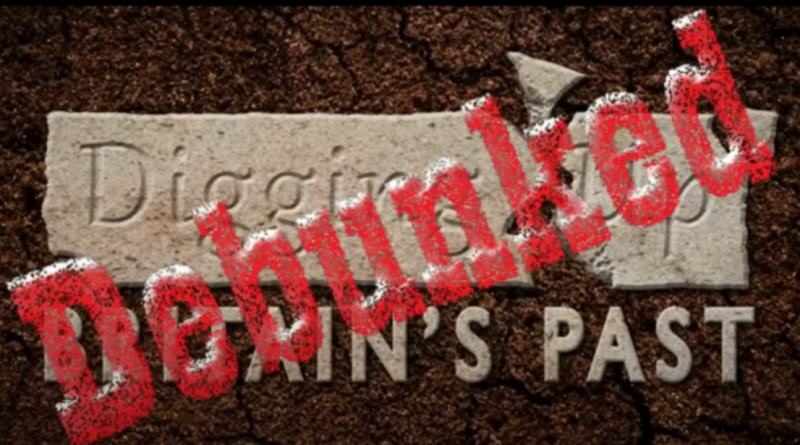
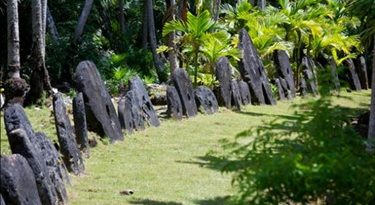


Pingback: 2024 Prehistoric Britain Blog Review - Prehistoric Britain